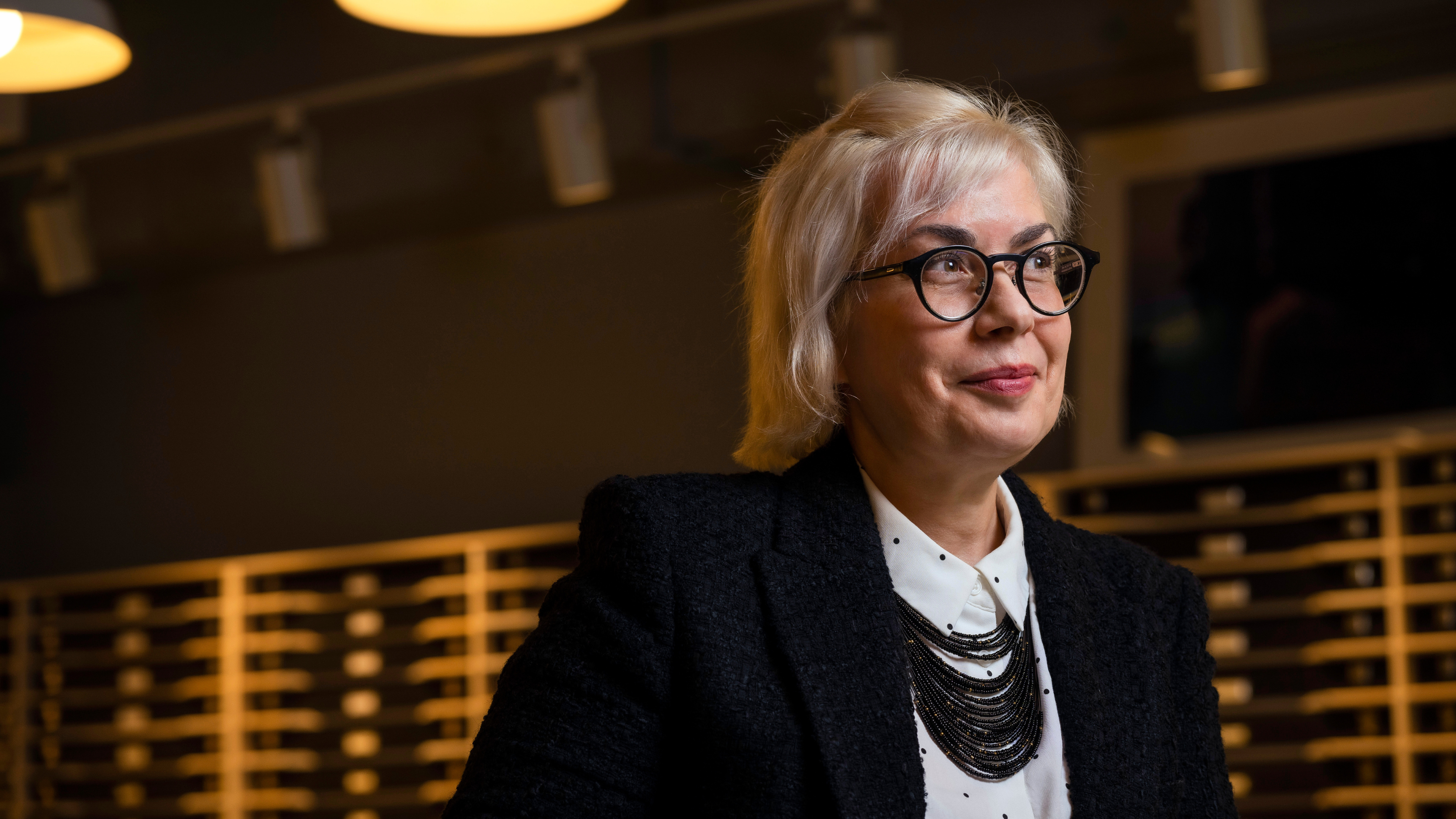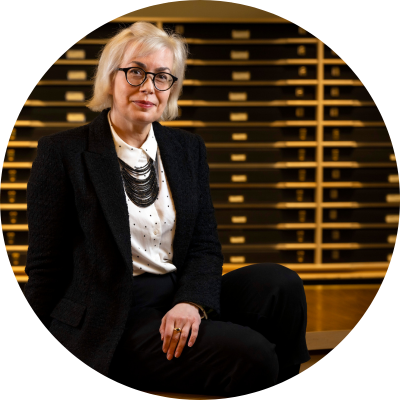Christine Conciatori, director of University of Alberta Museums, is focused on making all people feel welcome in museums.
In this week’s Innovator Spotlight, find out from Christine how she is bringing people together including her plans to have more interns and graduate research assistants working alongside her team.
How do you describe your work to people who don’t work in your field?
When I tell people I work in the museum field, I see what their reaction is, because most people think they are familiar with work being done in museums. From there, I would mention that I’m very lucky to work in museums across the country, including Pointe-à-Callière, Montreal Museum of Archeology and History, the Musée national des Beaux-Arts du Québec, the National Gallery of Canada, the Canadian Museum of History and I was part of the team who created the Canadian Museum for Human Rights.
In every position I have held, I had the chance to work with beautiful collections, objects, and specimens and develop projects around those collections. I also have the privilege of working with wonderful people who have various specialized skills. This is a field where you never stop learning and where you are always exposing yourself to new ideas.
Finally, the museum sector is evolving, and we are rethinking our processes and our role in society. Here at the U of A I’m still fairly new, and I am gradually getting more familiar with the people and the collections, while recognizing I still have lots to discover and many people to meet. I’m looking to develop collaboration, partnerships and how the Museums team can be more active and present for people on campus.
What’s one big problem you want to solve through your work?
This is a very ambitious goal, to solve something. Traditionally, museums have not been inclusive. Many people from various communities could only see themselves in museums through objects displayed in cases with an interpretation developed by museum staff without anyone from that culture being involved. My goal is to change this elitist perception of the museum and to foster a dialogue about what we do, how we do it, and what our role should be.
For example, I want to discuss the guidelines with which we collect, rethink the processes to develop projects in a way that is inclusive and respectful, and consider how to be there for the communities and the various groups at the university and outside the university. I want people to feel welcome in museums. We are already becoming more involved with some communities by greeting groups for collection tours, working with Humanities 101, and by exploring having more interns and graduate research assistant students work with us. We will continue to engage and find ways to collaborate with people at the university.
What does the word “innovation” mean to you?
Museums are evolving, and we no longer look to the past, but into the future. For me this means, among other things, reconsidering requirements for hiring people and recognizing various types of knowledge. It also means flattening the hierarchy and ensuring that every team member contributes to the projects, has a voice and can express themselves in a nurturing and safe environment.
What I’m looking forward to is exploring new ways to engage with collections and content. In the past, museums used to put objects at the centre of everything they did. Today, collections remain crucial to museums, but putting people at the heart of museums and looking at collections through this angle is another way to interpret them.
Innovation also means trying new things and accepting that a pilot project may not be a success but that it will be a way to learn and continue to move forward, instead of choosing a safe path and developing cookie-cutter exhibitions and programs. With the many collections on campus, I do not want to be a gatekeeper. These collections are invaluable, fascinating and tell so many stories. My goal is to work in collaboration with colleagues to find new ways to engage with these objects and specimens.
What’s been your biggest a-ha moment — in life or work — so far?
I have had many, and I have been quite lucky in my career, working in different museums across the country and travelling to many countries to meet colleagues from other museums to develop projects together. I’m looking forward to my next a-ha moment in February when we open our next exhibition, Echoes of Thunder: Unveiling the Mythical Chinese Dragon.
This will be the first exhibition to open since the pandemic. We are all very excited and are looking forward to greeting our visitors in the exhibition gallery at the Telus International Centre. We are experimenting with the design and the approach, and it will be very interesting to see how people react to this exhibit.
What’s your favourite thing about working at the U of A?
There is not one but two. The first thing that attracted me to this job was the collections. For me, as a museum professional, these 30 museum collections are absolutely amazing and diverse. We have collections in natural sciences, arts, and humanities. There is so much to learn.
And then, once I got here, I became inspired by the team I work with. We have a group of dedicated museum people, curators, and collection managers, all passionate about their work.
Do you have a role model at the U of A? How have they influenced you?
To follow up on my previous answer, the people with whom I work are all role models.
In Shape: The University Strategic Plan 2023-2033, the University of Alberta commits to having a positive impact on our students and staff, our communities, and the communities we serve here in Alberta and around the world. What are the impacts of your work?
I think one of the impacts we have is with students. One example is our paid internship program. We train students and give them the opportunity to learn various aspects of the museum field, research, exhibition, community engagement, collection management, etc., and to work with curators on campus with collections. We also provide tours, and we collaborate on different initiatives like Humanities 101, reaching different communities. Our commitment is to have a positive work environment where everyone has a voice and can contribute.

